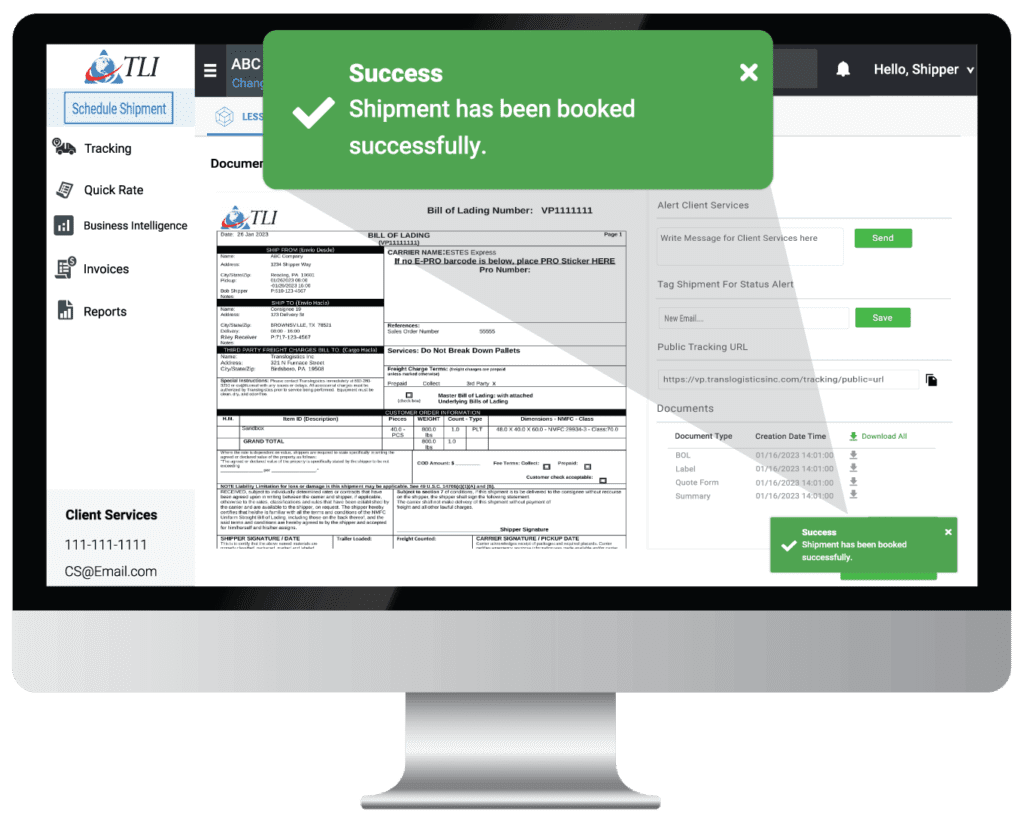When it comes to shipping freight, understanding the correct freight class is essential. This is because, freight class determines how much a shipment will cost to move, so getting it right is crucial.
How can I figure out my freight class?
To figure out the freight class of an LTL shipment, start by entering the weight and dimensions into a density calculator. The calculator will provide the Pounds per Cubic Foot (PCF). Then, compare the PCF to the NMFC code descriptions to find the correct freight class range. Once you have the appropriate range, you’ve identified your freight class. ViewPoint TMS simplifies this process by having a built-in, automated density calculator, ensuring accurate freight class determination during the bill of lading creation. Additionally, for those in need of a quick calculation, a free online density calculator is available through a link further down in this article.

Are NMFC Codes Changing in 2025?
The NMFC system is constantly reviewed to keep up with changing freight types and industry trends. In a modernization effort, updates are being made in 2025 to reflect consolidating commodities and adjusting classifications based on additional PCF tiers. Shippers need to stay aware of these updates to avoid reclassification errors and ensure they’re using the latest codes.
Changes to the NMFC codes typically come in the form of adjustments to existing codes. Shippers can rely on industry updates to stay on top of these changes, and delegate these changes to TLI. Staying current with NMFC codes means fewer billing mistakes while lowering shipping costs.
ViewPoint TMS helps users stay up-to-date on any changes to NMFC codes. The platform’s built-in tools ensure that your freight class is always accurate, even when changes happen. The automatic updates within ViewPoint TMS ensure your classification process runs smoothly year after year.
Freight classification plays a key role in shipping, helping carriers and shippers streamline logistics. The upcoming NMFC 2025 changes focus on four main factors: density, handling, stowability, and liability. Shipments that don’t require special handling, stowability, or liability considerations will have their freight class determined by density alone. These types of shipments:
- Can be handled using standard equipment with no special care.
- Fit easily into carrier equipment without wasting space.
- Pose minimal risk of damage or hazards during transport.
When these conditions are met, the 13-sub density progression is applied across the board. However, if there are exceptions, special classes are used to account for the unique features of the shipment.
What Is NMFC Freight Class?
NMFC freight class is a number that corresponds to how a commodity is classified in terms of its shipping characteristics. The freight class takes into account four main factors as pointed out earlier: density, ease of handling, stowability, and liability. The higher the freight class, the more expensive it is to ship the goods. Typically, low-density items like pillows or packing peanuts are assigned a higher class, while high-density items like steel or concrete have a lower class.
Understanding freight class is critical for controlling shipping costs. For instance, shipping a high-density product at the wrong freight class can lead to significant overcharging. To ensure you’re using the correct freight class, you must evaluate the product’s density, size, weight, and packaging. ViewPoint TMS’s automated tools make this process easier, reducing the chances of misclassification.
With ViewPoint TMS, freight class is calculated automatically as you input shipment details into the system. By entering key information about your goods, the system determines the appropriate freight class, ensuring you always pay the correct rate. This feature saves you time and prevents costly errors, helping streamline your shipping process.

Do You Have Access to a Free Density Calculator?
Yes, accessing a density calculator can significantly help when determining the correct NMFC Code for your shipments. The density of a product, calculated as its weight per cubic foot (PCF), is one of the main factors in determining its freight class. To make this process easier, many shippers turn to online density calculators. These tools allow you to input your product’s weight and dimensions to calculate its density quickly.
ViewPoint TMS offers this feature directly within the platform. The density calculator is built right into the system, so there’s no need for third-party tools or complicated formulas. During bill of lading creation, ViewPoint TMS automatically calculates the density of your goods based on the provided dimensions and weight. This ensures that your shipment classification code is determined accurately.
This built-in density calculator also supports the auto-tendering of the shipment to the proper carrier. As soon as the freight class is determined, ViewPoint TMS uses the correct information to tender the shipment, preventing delays and misclassifications. The integration of this feature makes the process seamless and efficient, which is one of the key reasons ViewPoint TMS is trusted by businesses looking to optimize their freight management.
If you’re in a hurry and need to quickly determine your freight class, you can click on this link to access an online free density calculator. To use it, simply enter the weight and dimensions of your shipment. The calculator will calculate the Pounds per Cubic Foot (PCF), which is a key factor in determining shipment class. Next, compare the PCF value against the range of NMFC Class codes. This will give you the appropriate freight class for your shipment, saving you time and ensuring accuracy in your shipping process.
Does FTL or Parcel Use NMFC Freight Class?
While FTL (Full Truckload) and Parcel services don’t use NMFC codes in the same way the LTL (Less Than Truckload) market does, they still monitor several key factors when determining pricing. FTL primarily focuses on weight & linear feet, meaning the amount of space the cargo occupies in the truck. Additionally, FTL carriers assess cargo liability—how valuable or fragile the goods are—and may adjust rates based on this. If you need excess coverage for high-value items, TLI can arrange that for you, as long as you notify us before tendering the load.
Parcel services, on the other hand, utilize density-based pricing. While it doesn’t follow the exact structure of NMFC codes, it operates on a similar principle by considering factors like the size and weight of the shipment. So, while the systems aren’t identical, they both rely on factors like density and cargo characteristics to determine the most accurate pricing.
